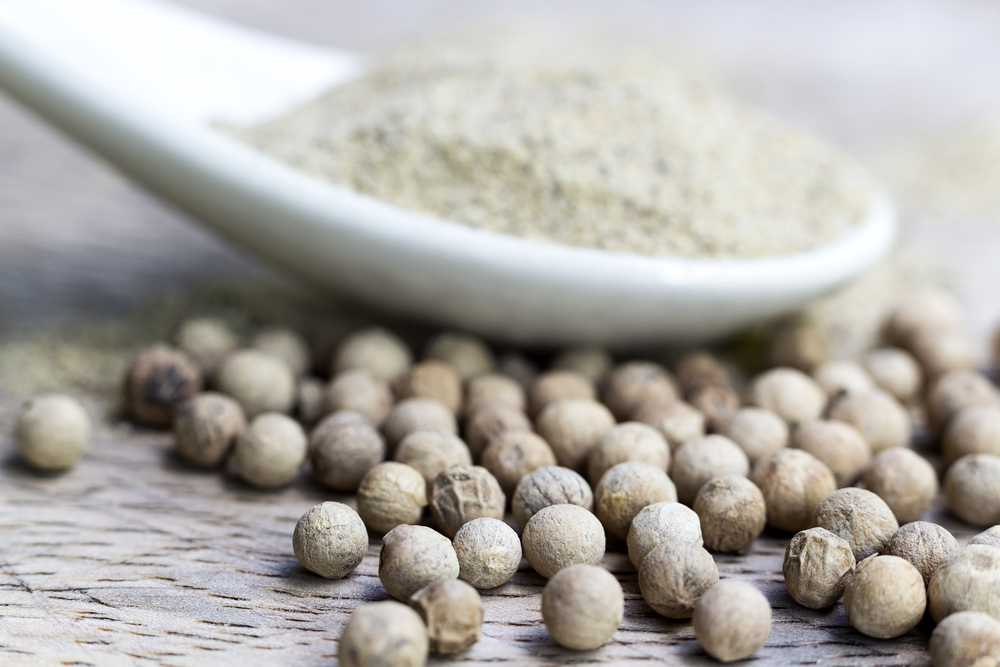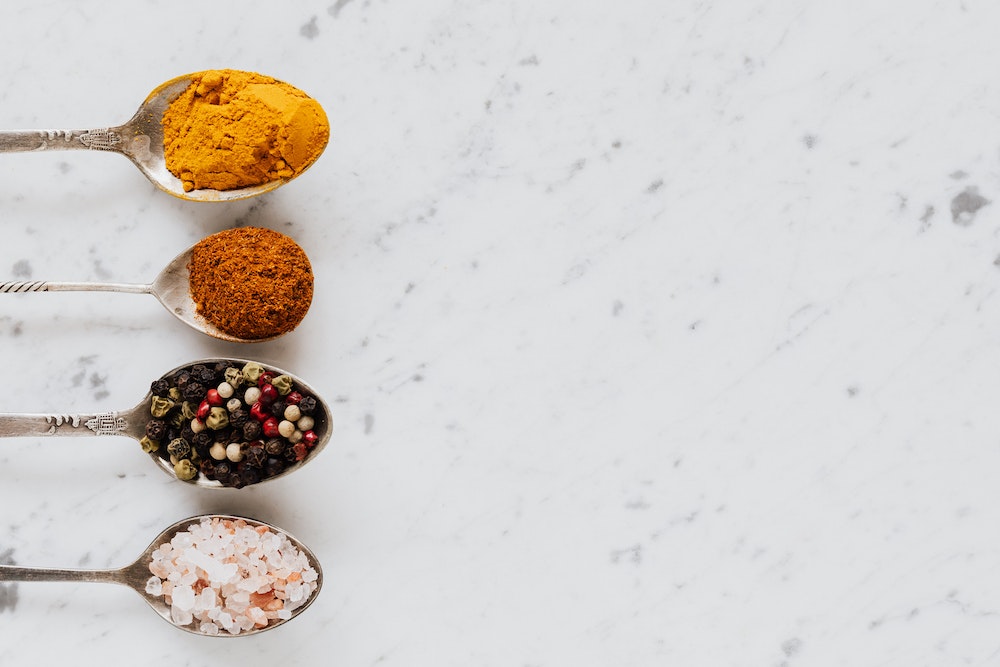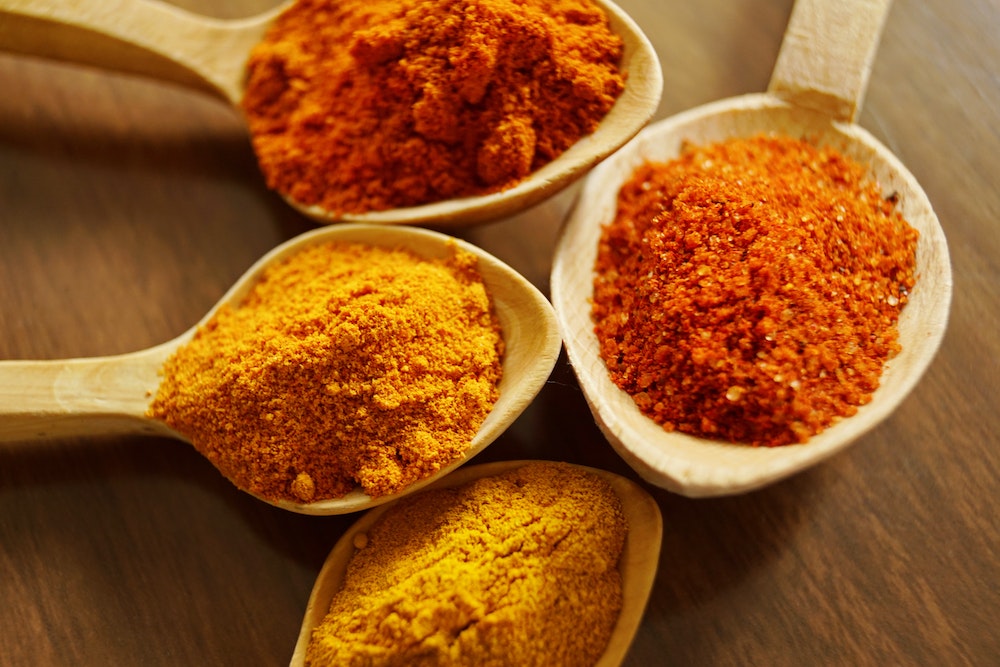White pepper is a popular ingredient in many recipes, particularly in dishes that require a subtle and mild flavor. However, sometimes white pepper is not readily available or may not be suitable for certain dishes.
In such cases, it is helpful to have a list of substitutes for white pepper that can be used as a replacement without compromising on the taste and flavor of the dish.
Understanding the characteristics of white pepper is essential to find the right substitute. White pepper is milder in taste and has a more subtle flavor than black pepper. It is also used in dishes where the appearance of black specks is not desirable.
Thus, finding a substitute that matches these characteristics is crucial. There are several alternatives to white pepper that can be used in place of it, and each has its unique flavor and aroma.
Key Takeaways:
- White pepper is a popular ingredient in many recipes that require a mild flavor.
- Finding the right substitute for white pepper is essential to maintain the taste and flavor of the dish.
- There are several alternatives to white pepper that can be used, such as black pepper, ginger, mustard, and paprika.
Understanding White Pepper

White pepper comes from the same plant as black pepper, the Piper nigrum. The difference between the two is all about how they’re processed and harvested. White pepper is made by letting the pepper berries ripen on the vine until they turn red.
Then, they are soaked in water to remove the outer layer, revealing the white seed inside. This seed is then dried and ground into a fine powder.
White pepper has a more subtle flavor than black pepper, with a slightly fermented taste. It is often used in dishes where the cook wants to avoid the black specks that come with using black pepper. White pepper is also used in dishes where the cook wants a more mild spice flavor.
One of the main compounds in white pepper is piperine, which is responsible for its spicy taste. Piperine is also found in black pepper, but in lower concentrations. Interestingly, piperine is also what gives black pepper its distinct aroma.
When substituting white pepper in a recipe, it is important to consider the flavor profile that the cook is trying to achieve. While black pepper can be used as a substitute, it will change the appearance of the dish.
Other substitutes, such as ground ginger or ground mustard, can offer a similar flavor profile to white pepper without changing the appearance of the dish.
In summary, white pepper is a milder spice than black pepper, with a slightly fermented taste. It is often used in dishes where the cook wants to avoid black specks or a more mild spice flavor. When substituting white pepper, it is important to consider the flavor profile and appearance of the dish.
Common Uses of White Pepper

White pepper is a versatile ingredient that can be used in a wide variety of dishes. It is commonly used in soups, sauces, stews, and curries to add a subtle heat and depth of flavor. Its mild and slightly earthy flavor makes it a great addition to light-colored dishes, such as fish and dressings.
In Thai cuisine, white pepper is often used in marinades and dry rubs for meat dishes. It can also be added to creamy sauces and curries to balance out the richness of coconut milk.
In Chinese cuisine, white pepper is a common ingredient in stir-fries and noodle dishes. It is also used in marinades and sauces for meat dishes.
When using white pepper, it is important to keep in mind that it can be more potent than black pepper. It is recommended to use it sparingly and taste as you go to avoid overpowering the dish.
Overall, white pepper is a versatile ingredient that can add depth and complexity to a wide range of dishes. Whether you are making a creamy sauce, a spicy curry, or a light-colored dressing, white pepper is a great addition to any recipe.
Top Substitutes for White Pepper

When it comes to cooking, white pepper is a common ingredient used in many dishes. However, if you don’t have it on hand or don’t prefer its taste, there are several substitutes you can use.
Here are some of the top substitutes for white pepper and how to use them.
Black Pepper
Black pepper is the most commonly used substitute for white pepper. It has a similar aroma and spicy flavor, making it a great alternative. However, it has a stronger taste than white pepper, so it’s best to use it in smaller quantities. Black pepper is a great substitute for white pepper in dishes like white sauces, seafood, and salad dressings.
Ground Ginger
Ground ginger is another great substitute for white pepper. It has a similar flavor profile and aroma, making it a great alternative. It also has a yellow color, which won’t affect the appearance of your dish. Ground ginger is a great substitute for white pepper in dishes like soups, stews, and curries.
Ground Mustard
Ground mustard is a good substitute for white pepper as it has a similar spicy flavor. It also has a red hue, which won’t affect the appearance of your dish. Ground mustard is a great substitute for white pepper in dishes like roasted meats, stews, and sauces.
Pink Pepper
Pink pepper is a great substitute for white pepper if you’re looking for a milder spice. It has a sweet and aromatic flavor, making it a great alternative. It also has a pink color, which can add a pop of color to your dish. Pink pepper is a great substitute for white pepper in dishes like salads, seafood, and roasted vegetables.
Green Pepper
Green pepper is another great substitute for white pepper. It has a similar flavor profile and aroma, making it a great alternative. It also has a green color, which can add a pop of color to your dish. Green pepper is a great substitute for white pepper in dishes like stir-fries, soups, and stews.
Garlic Pepper
Garlic pepper is a good substitute for white pepper as it has a similar spicy flavor. It also has a garlic flavor, which can add depth to your dish. Garlic pepper is a great substitute for white pepper in dishes like roasted meats, stews, and sauces.
Cayenne Pepper
Cayenne pepper is a great substitute for white pepper if you’re looking for a spicier alternative. It has a similar spicy flavor, but it’s much hotter than white pepper. It’s best to use it in small quantities. Cayenne pepper is a great substitute for white pepper in dishes like chili, soups, and stews.
Turmeric
Turmeric is a good substitute for white pepper if you’re looking for a milder spice. It has a similar aroma and flavor profile, making it a great alternative. It also has a yellow color, which can add a pop of color to your dish. Turmeric is a great substitute for white pepper in dishes like curries, soups, and stews.
Considerations When Substituting

When substituting white pepper, there are a few things to keep in mind. First and foremost, it is important to consider the appearance of the dish. White pepper is often used in cream-based dishes to maintain a clean appearance, so using a substitute that changes the dish’s color may not be ideal.
Next, consider the tartness of white pepper. It has a slightly acidic taste that can be difficult to replicate with other spices. If tartness is an important aspect of the dish, consider using a combination of spices to achieve a similar flavor profile.
The aroma of white pepper is also distinct and can be difficult to replicate. Some substitutes, such as black pepper, have a similar aroma, while others, like ginger, have a different scent altogether.
When it comes to flavor, white pepper has a spicy taste that is less pungent than black pepper. If using a substitute, consider adjusting the amount used to achieve the desired level of spiciness.
If the dish requires a red hue, it may be challenging to find a suitable substitute. However, red peppercorns or paprika can be used in small quantities to add a hint of color.
For those looking for a milder spice, ground ginger or mustard can be used as a substitute. These spices also add a touch of sweetness to the dish.
Overall, when substituting white pepper, it is important to consider the specific qualities of the spice that are needed for the dish. Fresh ginger can be a great substitute for those who want a mild spice with a unique flavor profile. Table 1 below summarizes some of the key considerations when substituting white pepper.
Table 1: Considerations When Substituting White Pepper
| Consideration | Substitution Options |
|---|---|
| Appearance | White peppercorns, red peppercorns, pink peppercorns, paprika |
| Tartness | Black pepper, lemon zest, sumac |
| Aroma | Black pepper, cumin, coriander, ginger |
| Spicy flavor | Black pepper, cayenne pepper, red pepper flakes |
| Red hue | Red peppercorns, paprika |
| Mild spice | Ground ginger, ground mustard |
| Lower amount | Red pepper flakes, cayenne pepper |
| Small quantity | Red peppercorns, pink peppercorns |
| Fresh ginger | Ground ginger |
By considering these factors, it is possible to find a suitable substitute for white pepper that will work well in a variety of dishes.
DIY Spice Mix as a Substitute

For those who don’t have white pepper in their kitchen pantry, there are plenty of substitutes available. One of the best options is to create a DIY spice mix that can be used in place of white pepper in various recipes.
To make a DIY spice mix, start with a base of ground pepper. Then, add other spices and herbs to create a unique blend. Some great options include garlic powder, onion powder, dried thyme, and dried basil. You can also add a pinch of salt to balance the flavors.
This DIY spice mix can be used in a variety of dishes, including macaroni and cheese, salad dressings, and as a garnish for seafood. It offers a similar flavor profile to white pepper, but with a bit more complexity and depth.
Here is a simple recipe for a DIY spice mix:
- 1 tablespoon ground pepper
- 1 teaspoon garlic powder
- 1 teaspoon onion powder
- 1 teaspoon dried thyme
- 1 teaspoon dried basil
- Pinch of salt
Simply mix all of the ingredients together in a small bowl and store in an airtight container. This spice mix can be used in place of white pepper in any recipe that calls for it.
Overall, creating a DIY spice mix is a great way to substitute for white pepper in your cooking. It allows you to customize the flavors to your liking and ensures that you always have a versatile spice blend on hand.
Where to Buy Substitutes
When it comes to finding substitutes for white pepper, there are a few options available. Some of these can be found in most grocery stores, while others may require a trip to a specialty store or an online retailer.
Black Pepper
One of the most common substitutes for white pepper is black pepper. This can be found in most grocery stores, either pre-ground or in whole peppercorn form. It is important to note that black pepper has a stronger flavor than white pepper, so it is recommended to use less black pepper than the recipe calls for.
Ginger
Ground ginger is another popular substitute for white pepper. It can be found in most grocery stores in the spice aisle.
Ginger has a similar flavor profile to white pepper, but it also adds a slightly sweet and spicy note to dishes. It is important to note that ginger has a distinct flavor, so it may not be the best choice for all recipes.
Red Peppercorn
Red peppercorns are a less common substitute for white pepper, but they can be found in some specialty stores or online retailers. They have a similar flavor profile to white pepper, but they also add a slightly fruity and floral note to dishes.
It is important to note that red peppercorns can be quite spicy, so they may not be the best choice for those who are sensitive to heat.
Green Peppercorn
Green peppercorns are another less common substitute for white pepper. They can be found in some specialty stores or online retailers.
They have a milder flavor than black pepper, but they still add a slightly spicy and earthy note to dishes. It is important to note that green peppercorns can be quite pungent, so they may not be the best choice for all recipes.
Overall, finding substitutes for white pepper can be relatively easy, as many of them can be found in most grocery stores. It is important to keep in mind the flavor profile of each substitute and adjust the amount used accordingly.
Health Benefits of Substitutes

Many substitutes for white pepper offer health benefits that can improve overall well-being. Here are some of the health benefits of the most popular substitutes:
Black Peppercorn
Black peppercorn is a common substitute for white pepper. It is rich in antioxidants and has anti-inflammatory properties that can help reduce the risk of chronic diseases such as cancer and heart disease. It also aids digestion and can help alleviate digestive issues such as bloating and constipation.
Ginger Powder
Ginger powder is another popular substitute for white pepper. It has anti-inflammatory and antioxidant properties that can help reduce inflammation and oxidative stress in the body. It can also help alleviate nausea and vomiting, and may help reduce muscle pain and soreness.
Paprika
Paprika is a spice made from dried and ground peppers. It is a good source of vitamin A, which is important for maintaining healthy vision and skin. It also has anti-inflammatory properties that can help reduce the risk of chronic diseases such as cancer and heart disease.
Turmeric
Turmeric is a spice commonly used in Indian cuisine. It contains a compound called curcumin, which has powerful anti-inflammatory and antioxidant properties. It may also help improve brain function and reduce the risk of chronic diseases such as Alzheimer’s disease and cancer.
Cayenne Pepper
Cayenne pepper is a type of chili pepper that is commonly used in spicy dishes. It contains capsaicin, which has been shown to have anti-inflammatory and pain-relieving properties. It may also help boost metabolism and aid in weight loss.
Overall, using substitutes for white pepper can not only add flavor to dishes but also provide health benefits. However, it is important to use them in moderation and consult with a healthcare professional if you have any underlying health conditions.
Frequently Asked Questions
What are some common substitutes for white pepper in cooking?
There are several common substitutes for white pepper in cooking, including black pepper, cayenne pepper, red pepper flakes, and paprika. Each of these substitutes has its own unique flavor profile and level of spiciness, so it’s important to choose the right one for your recipe.
What are the differences between white pepper and black pepper?
White pepper and black pepper come from the same plant, but they are processed differently. White pepper is made by removing the outer layer of the peppercorn, while black pepper is made by leaving the outer layer intact.
White pepper has a milder, more delicate flavor than black pepper, and is often used in white or light-colored dishes to avoid black flecks.
Can I use black pepper instead of white pepper in a recipe?
Yes, you can use black pepper instead of white pepper in a recipe. However, keep in mind that black pepper has a stronger flavor than white pepper, so you may need to use less of it. Additionally, black pepper will leave black flecks in your dish, which may not be desirable in certain recipes.
How much black pepper should I use as a substitute for white pepper?
As a general rule, you should use half as much black pepper as you would white pepper when substituting in a recipe. For example, if a recipe calls for 1 teaspoon of white pepper, use 1/2 teaspoon of black pepper instead.
Are there any health benefits to using white pepper in cooking?
White pepper contains antioxidants and anti-inflammatory compounds that may have health benefits. Additionally, it has been shown to have antibacterial properties and may help improve digestion.
What does white pepper bring to a recipe that black pepper does not?
White pepper has a milder, more delicate flavor than black pepper, and is often used in white or light-colored dishes to avoid black flecks. It also has a slightly different aroma than black pepper, which can add a unique dimension to certain dishes.







